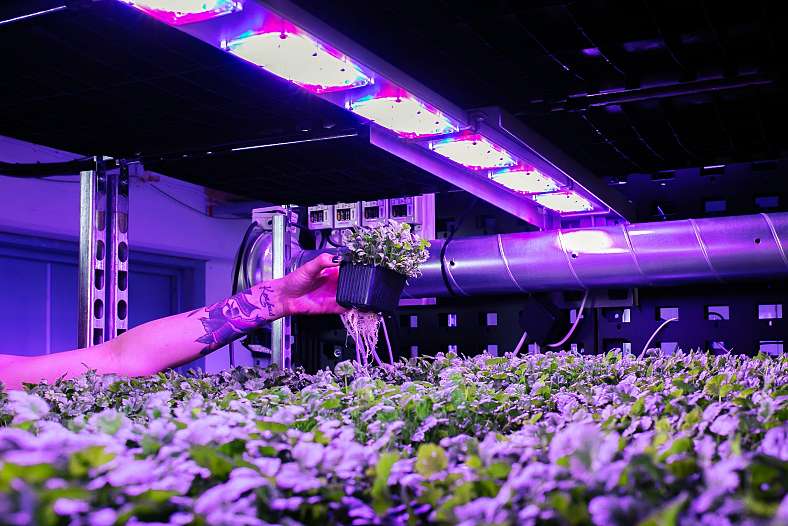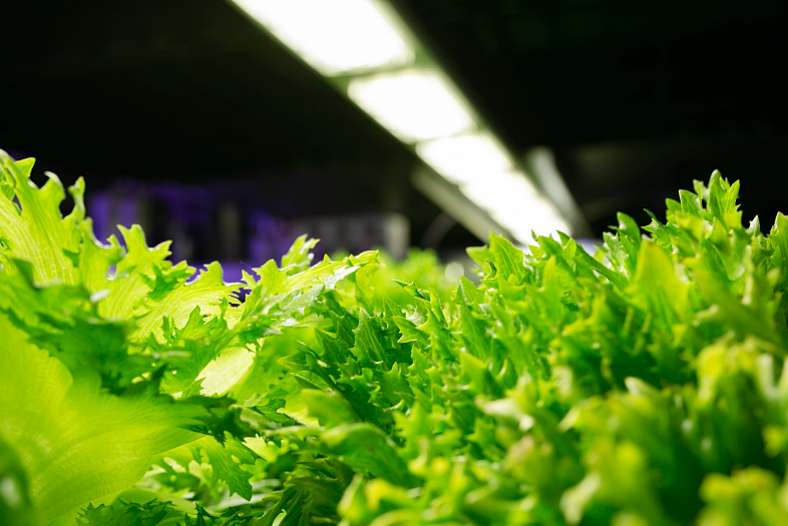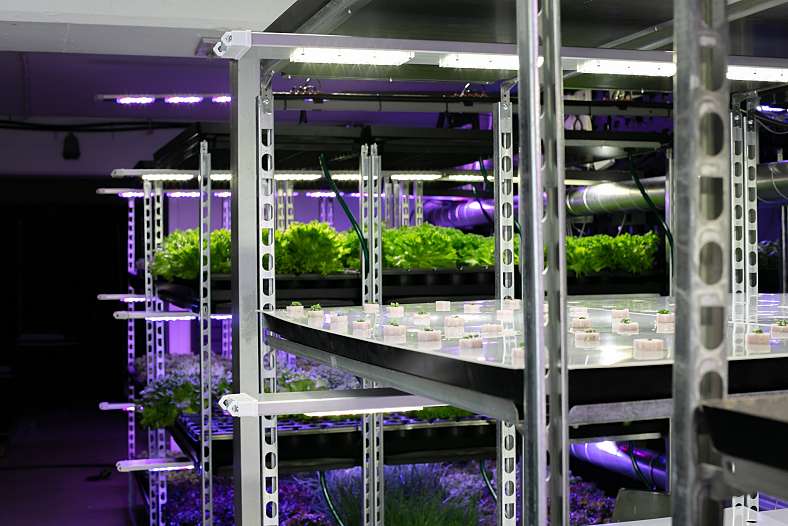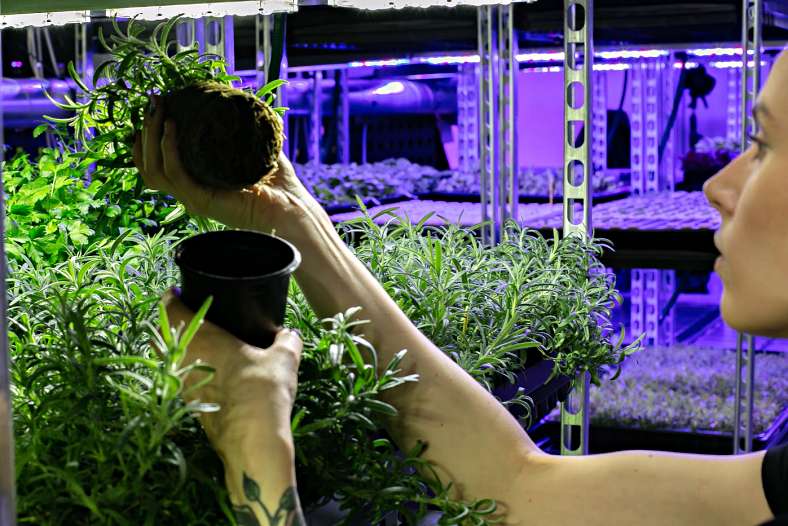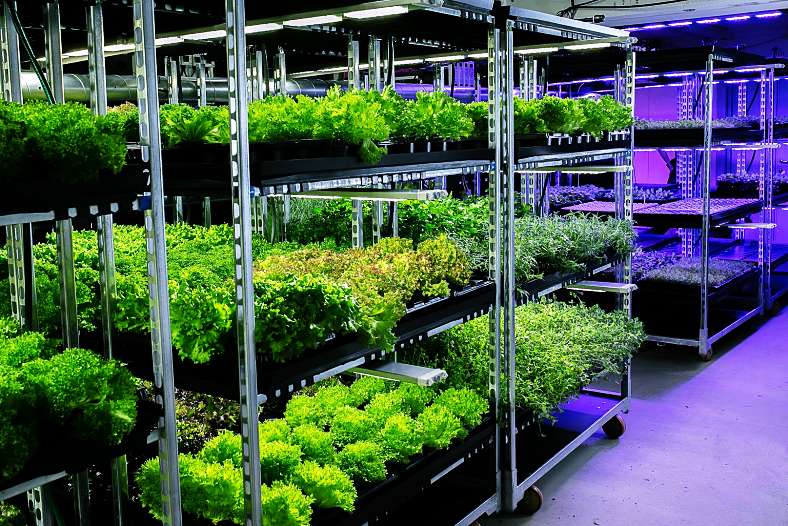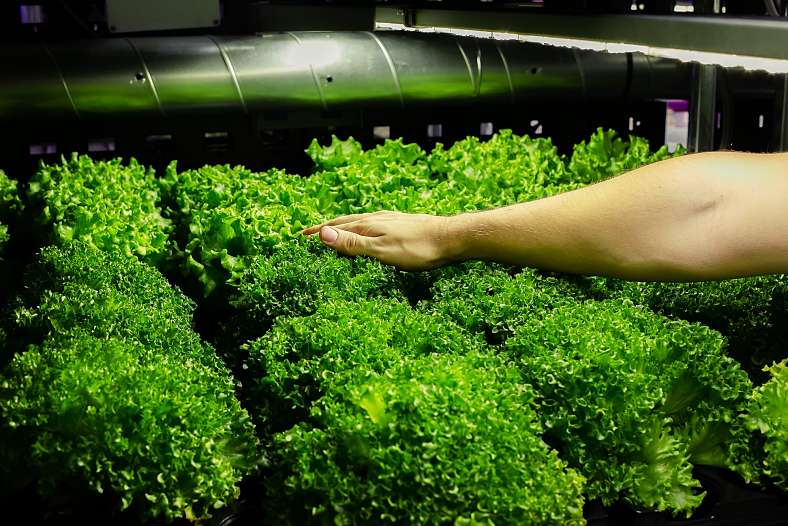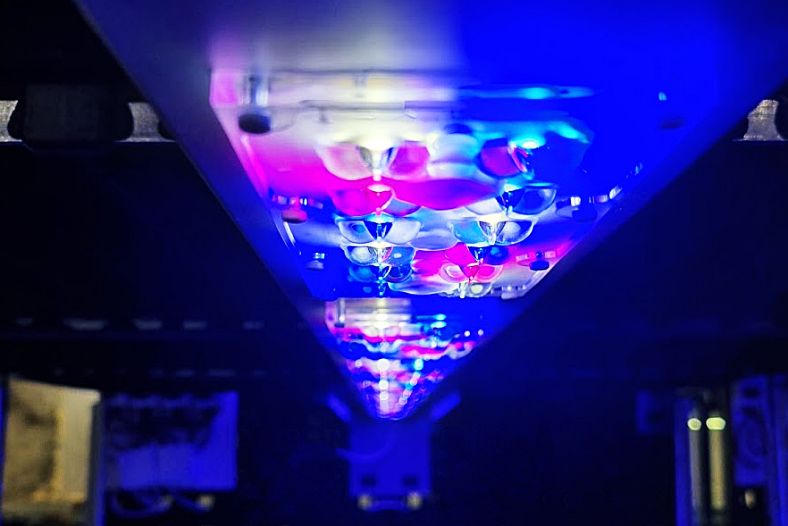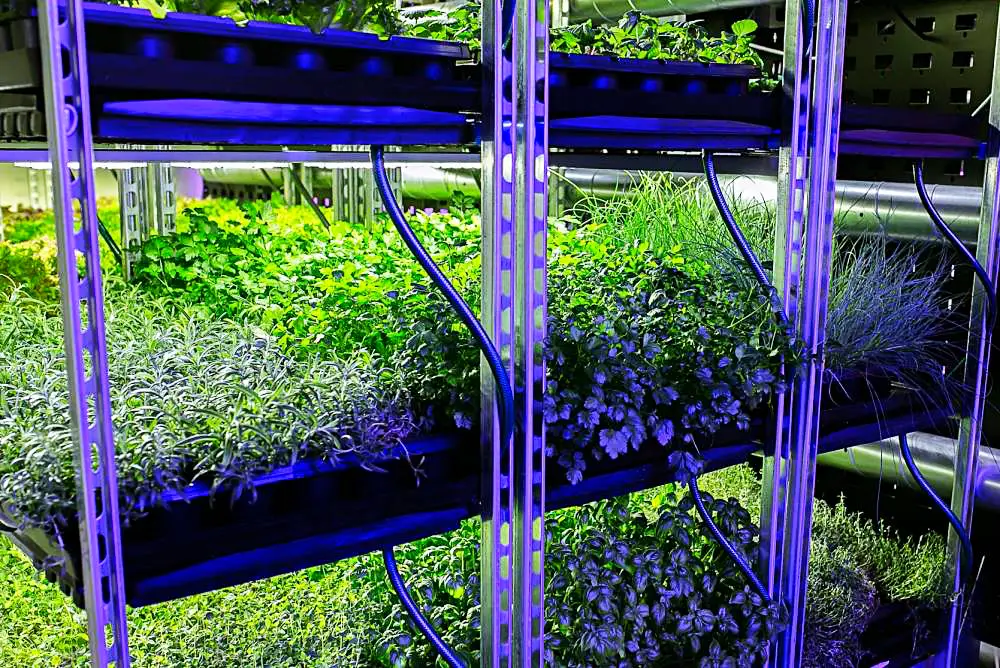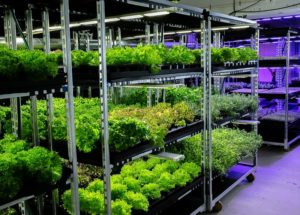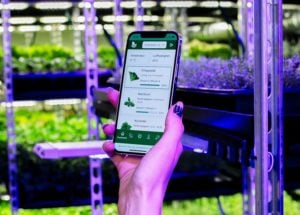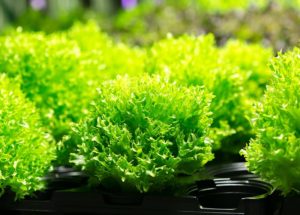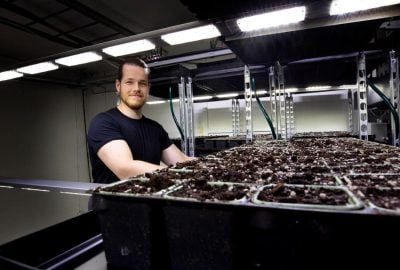Vertical farming energy consumption can be reduced, but how? New methods and equipment have brought down v-farming electrical bills, but the energy consumption still poses a challenge. It must be reduced even more for vertical farming to become wholly sustainable and more cost-effective than traditional farming. Meanwhile, let’s look at what you can do right now to reduce vertical farming energy consumption.
Traditional farming can’t feed our growing population without exhausting the planet. Our future generations need new farming methods. Vertical farming might be the solution if we can find a way to lower the power usage.
Note that neither vertical nor traditional farming can feed our future citizens by themselves. We need both farming methods to survive. Instead of competing, they should complement each other.
As for reducing vertical farming energy consumption, plant scientists worldwide are working hard to solve this issue. They have made a lot of progress in the last couple of years, but there is still much to accomplish.
Until they come up with more practical solutions, it’s essential to do what we can to reduce vertical farming energy consumption here and now.
Contents:
- Reduce v-farming energy consumption with temperature control
- Location affects power consumption on vertical farms
- Strategic LED control reduces vertical farming energy consumption
- Innovative power-saving methods in vertical farming
Reduce v-farming energy consumption with temperature control
Vertical farming requires lots and lots of LED grow lights. The lamps produce light energy and heat energy. Your plant growth makes good use of the light, but to keep your energy costs as low as possible, you need to use the heat as well.
Heat energy transfers in more ways than one on vertical farms. For instance, when plant growth consumes light energy, they emit heat energy in the form of water. The water evaporates off the plants and increases the humidity.
Therefore, all vertical farms need to invest in well-functioning ventilation systems. This ensures that the temperature and humidity on your vertical farm promote optimal plant growth.
At the same time, it is vital to utilize the heat from the grow lights so that you don’t waste energy on heating the facility. The plants will thrive if the growth rooms are kept nice and cool.
Naturally cool temperatures are beneficial because it cools down the water in the farming systems. The water can then be routed to the ventilation system to maintain optimal plant growth conditions.
In other words, reducing vertical farming energy consumption is all about the internal recycling of resources. To what degree you achieve this depends on how well you plan your v-farming startup. For instance, the choice of location is crucial.
Related article: Vertical farming – From concept to profit
Location affects power consumption on vertical farms
Choosing the right location is crucial to your vertical farm’s success. Both costs and income are directly affected by your location. So, you better think twice before you engage your v-farm startup.
To keep your energy consumption as low as possible, you need a naturally cool place with a good layout for installing electrical systems and irrigation.
Naturally cool environments prevent excessive heat production and promote optimal plant growth. Be aware that some places might get too cold in winter. Therefore, it is also important to look for a well-isolated site.
Ideally, the building and its location should facilitate total temperature control since your goal is to keep the growth conditions constant throughout the year.
Isolating against extreme cold is not half as challenging
as cooling down an overheated vertical farm.
As mentioned, chilled water can be used effectively to keep the plant growth conditions optimal. The same is the case with heated water.
In extreme cases, when the outdoor temperature drops well beyond zero, for instance, warm water might save your plants. The heat from your LED grow lights can heat water which is pumped into pipes around your plant growth.
That said, no matter the weather conditions or location, a naturally cool building will always be preferable. It is the best way to keep vertical farming energy consumption low.
You can always isolate your building against the cold. However, you will always depend on thousands of grow lights to optimize your plant growth, and they produce substantial amounts of heat.
Fret not; strategic use of LED lights can lower your v-farming power consumption.
Related article: Vertical farming’s biggest challenges

Strategic LED control reduces vertical farming energy consumption
It’s good news that vertical farms in the northern hemisphere must consider how to heat their facilities. It’s a result of recent developments in LED technology, which has reduced lamp heat and lowered production costs.
Still, you must pay close attention to how much energy your grow lights consume. To control lamp heat, you need to choose the right type of lamps, the lamp placement must be good, and your light control must be exceptional.
Accurate wavelength adjustments lower heat generation
and reduce vertical farming energy consumption.
A recent breakthrough in LED technology allowed vertical farms to fine-tune their lighting more accurately. The result was a better balance between optimal plant growth and minimal heat generation, which meant lower production costs.
Furthermore, new LED grow lights allow for more accurate adjustments of various wavelengths. This makes it possible to give your plant growth the exact kind of light it needs in the various stages of its growth cycle.
Related article: Why are LED grow lights best for vertical farming?
Here is a good insider’s tip for vertical farming startups: Remember that outside weather can be used to your advantage even though your business is based on indoor plant growth.
In the summertime, it might be useful to turn the day around. If your LED grow lights are turned on at night, they will stay a lot cooler than in the day. Likewise, it might be good to keep your lights on at night during the winter to keep your site warm.
Again, it all comes down to the location of your vertical farm.
Inventive power-saving methods in vertical farming
1. Artificial intelligence automation
Many researchers invest a lot of time developing new vertical farming solutions. Some of their latest inventions have already made vertical farming more profitable, like the latest LED grow lights and artificial intelligence.
AI for vertical farming is exciting since it allows for plant growth automation. AI can surveil plant growth a lot more efficiently than human eyes. This paves the way for radically improved plant growth optimization.
By analyzing data from thousands of images taken by v-farming sensors, AI can assess your plant’s condition with great accuracy. If the growth is less than optimal, the AI will soon make the correct adjustment to lighting, irrigation, or temperature.
2. Sustainable recycling of CO2
A less discussed but equally exciting field in v-farming research is the recycling of CO2. As it turns out, CO2 promotes optimal plant growth. Photosynthesis becomes more effective with ample amounts of CO2 and emits oxygen as waste material.
This gave some researchers the idea of placing vertical farms in office buildings. The layout of office buildings is well-suited for vertical farming, and they tend to be abandoned at night.
Pumping CO2 back into the farming system reduces energy consumption.
When testing this hypothesis, it turned out that vertical farming in office buildings reduced the CO2 levels by as much as 34 percent. Even though the lighting conditions remained the same, the plant growth was more effective.
Depending on the number of office workers and stage in the plant growth cycle, the building ventilation costs dropped by 12-58 percent. All in all, the office ventilation cost dropped radically, while the plants grew better than ever at no added cost.
3. Solar cell reduction of vertical farming energy consumption
Naturally, some locations are more suited for solar cell utilization than others. That said, solar cell technology has also made tremendous progress in later years. In January 2022, a Singapore research team had a breakthrough.
By inventive use of organic materials and a mineral called «perovskite», they set a new record in power conversion efficiency of solar cells.
This meant a more efficient conversion of sunlight to energy, which in turn led to the cost of solar cell technology going down. On top of this, researchers have developed alternative solutions for making the most of solar cells on vertical farms.
The idea is to reutilize the farming system’s light energy by using so-called solar trackers. These trackers enable revolving solar panels to make energy from LED light emissions when the sun is down.
This means that the solar panels will be producing energy 24/7, even at night or when the sun is hidden behind dark clouds.
It remains to be seen how reduced solar cell prices will affect the economy in vertical farming. Still, the breakthrough in Singapore signals that new solutions are on the horizon.
Related article: Vertical farming research
Conclusion
Vertical farming is about to change the international farming industry. The final bump in the road is energy consumption, but the solution is at our fingertips. Once we solve this problem, vertical farming will be sustainable and profitable for all.
Our future holds better means of food production, but for now, we’ll have to do our best to reduce vertical farming energy consumption. The best way to do this is strategic planning and an iron grip on your lighting and temperature conditions.
Related article: How vertical farming reduces environmental impact
Resources
AgFunder News: How IGS reduces vertical farming costs
Hortibiz: How recycling renewable energy can benefit indoor farming
HortiDaily: “Vertical farming costs will keep going down and cut with traditional agriculture costs”
iFarm: How Much Electricity Does a Vertical Farm Use?
National Center for Biotechnology Information: How energy innovation in indoor vertical farming can improve food security, sustainability, and food safety?
Science Daily: New efficiency record for solar cell technology
ScienceDirect: The effects of vertical farming on indoor carbon dioxide concentration and fresh air energy consumption in office buildings
U.S. Department of Energy: Energy Savings Potential of SSL in Horticultural Applications
Vertical Farm Daily: India: Cutting down 60-70% of energy costs to make vertical farming affordable


